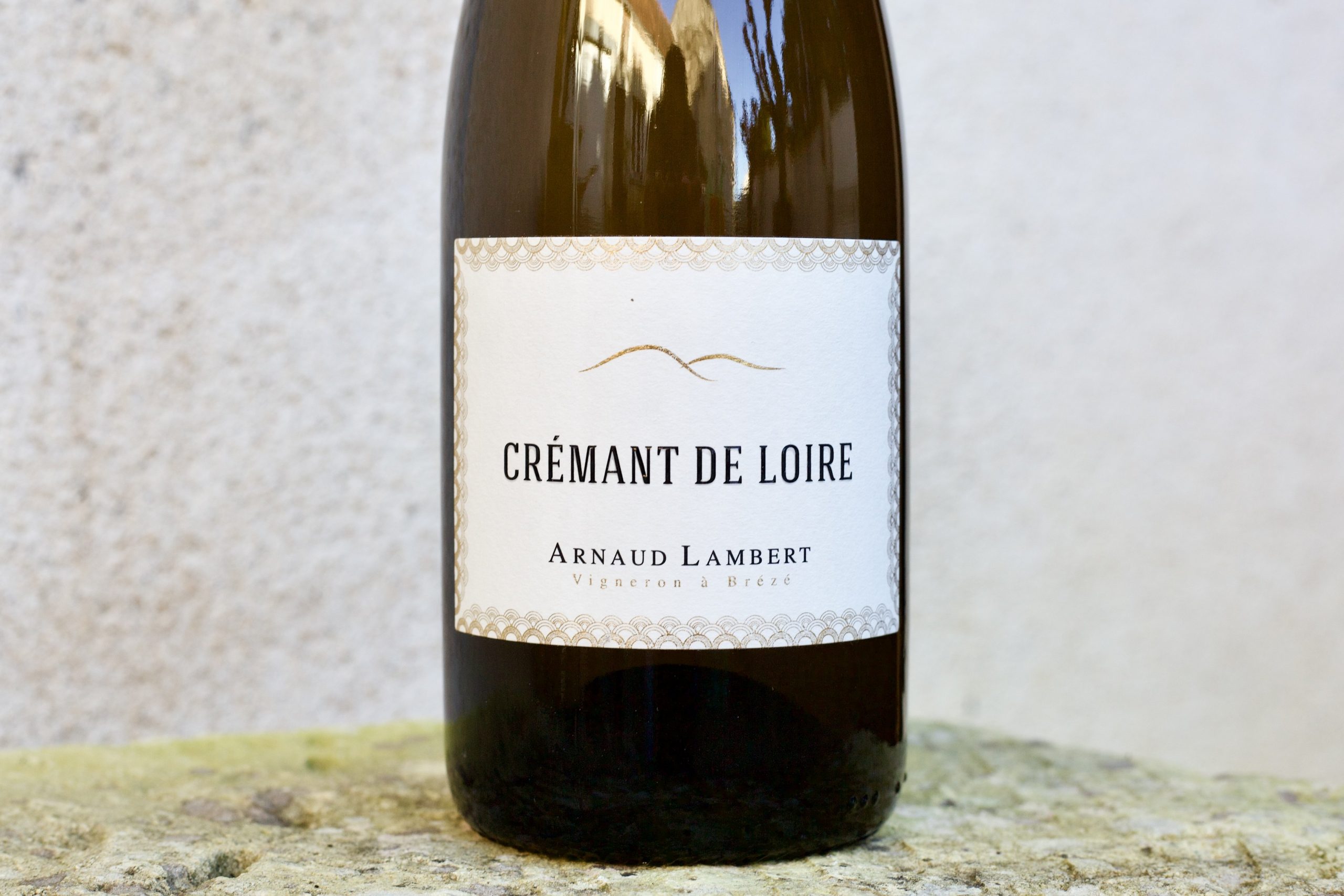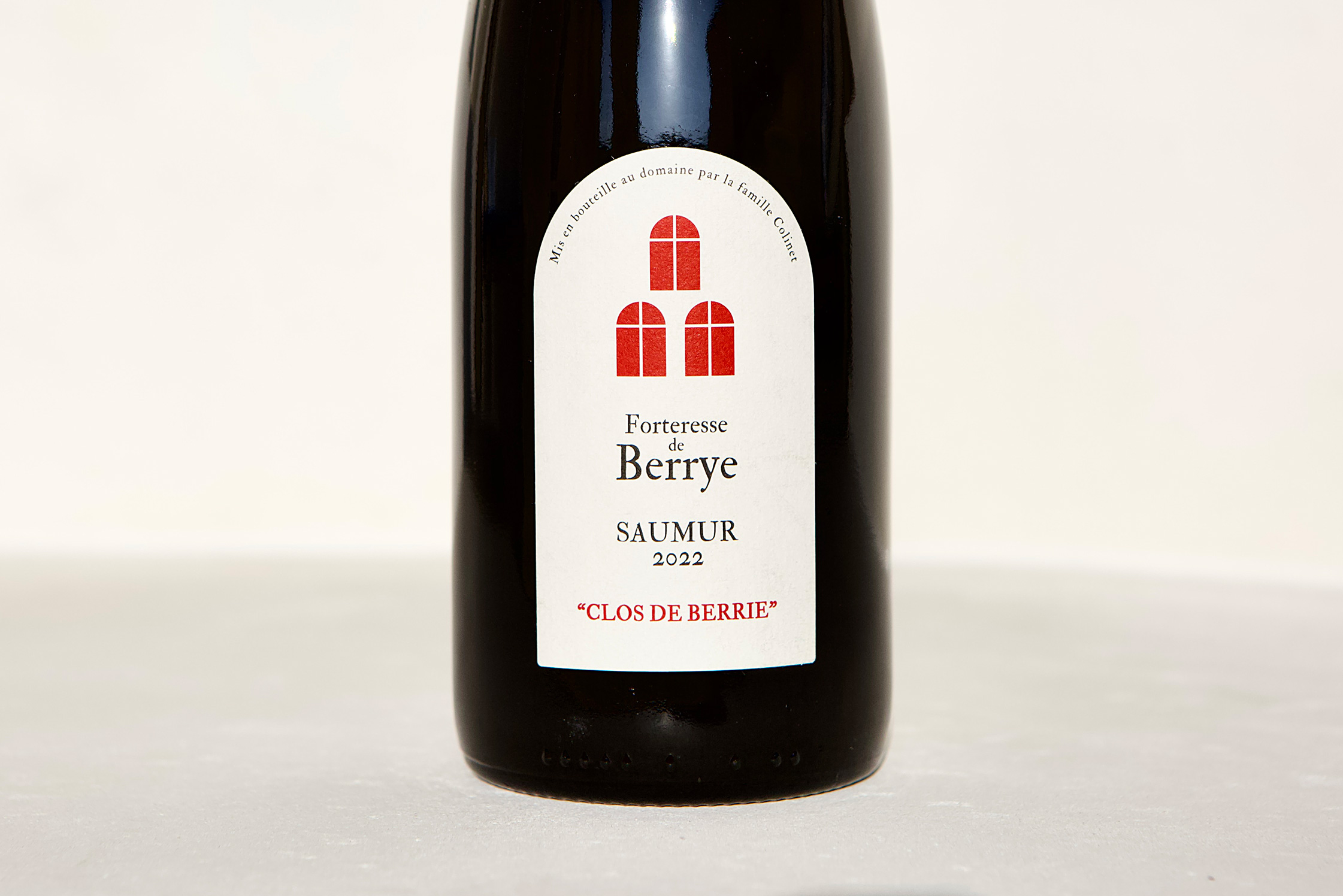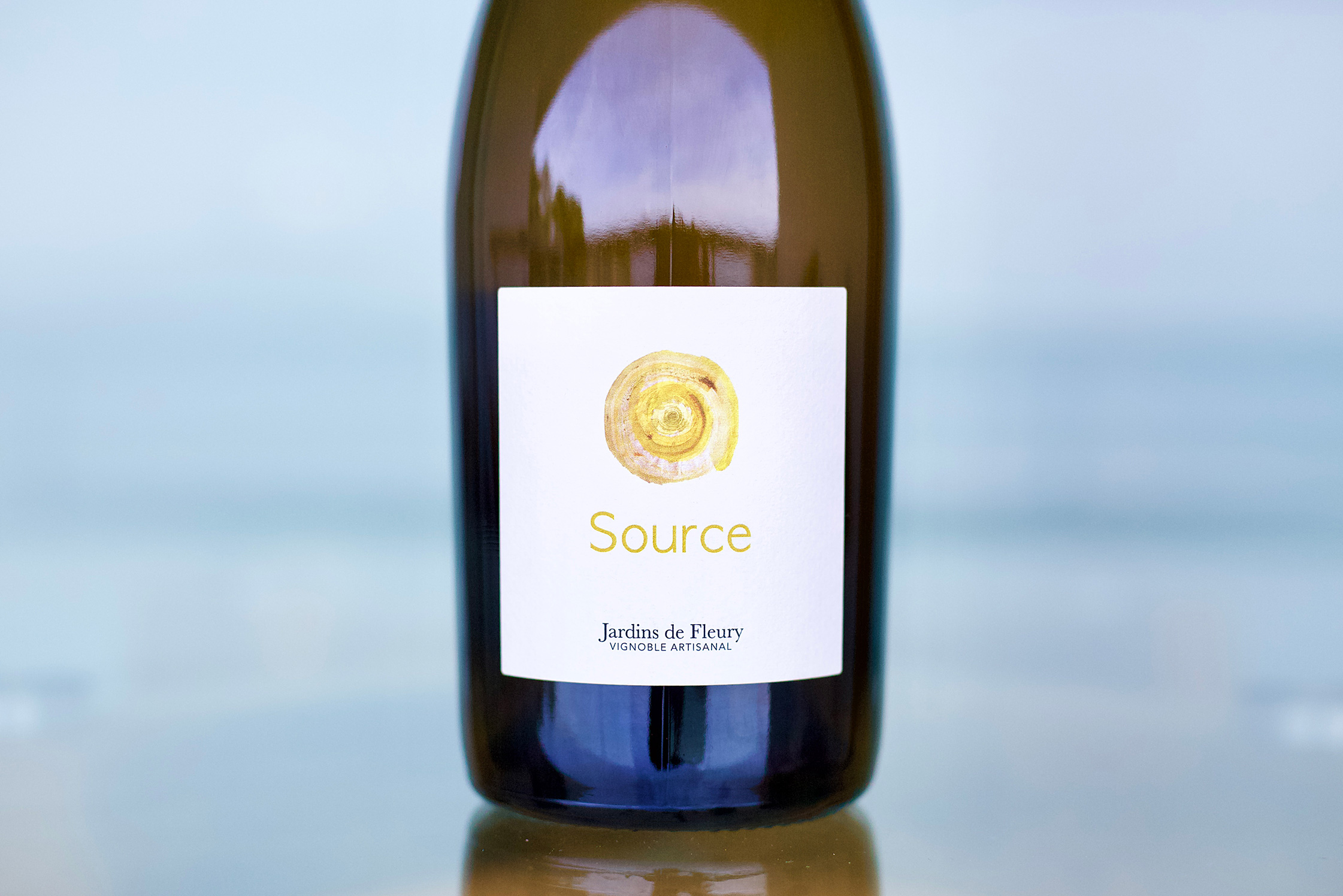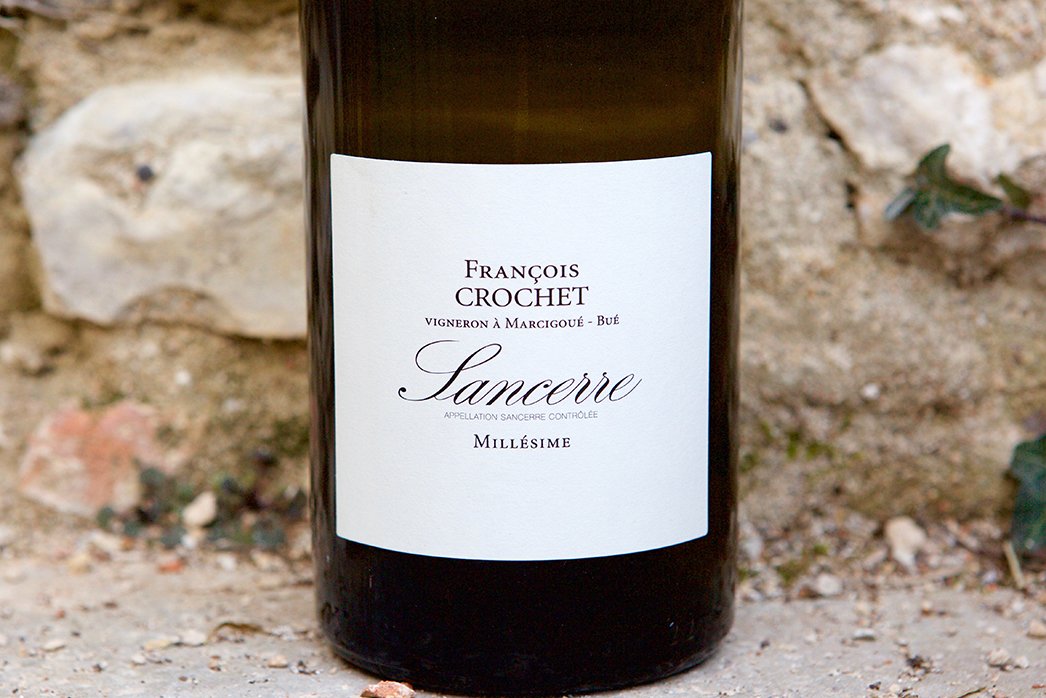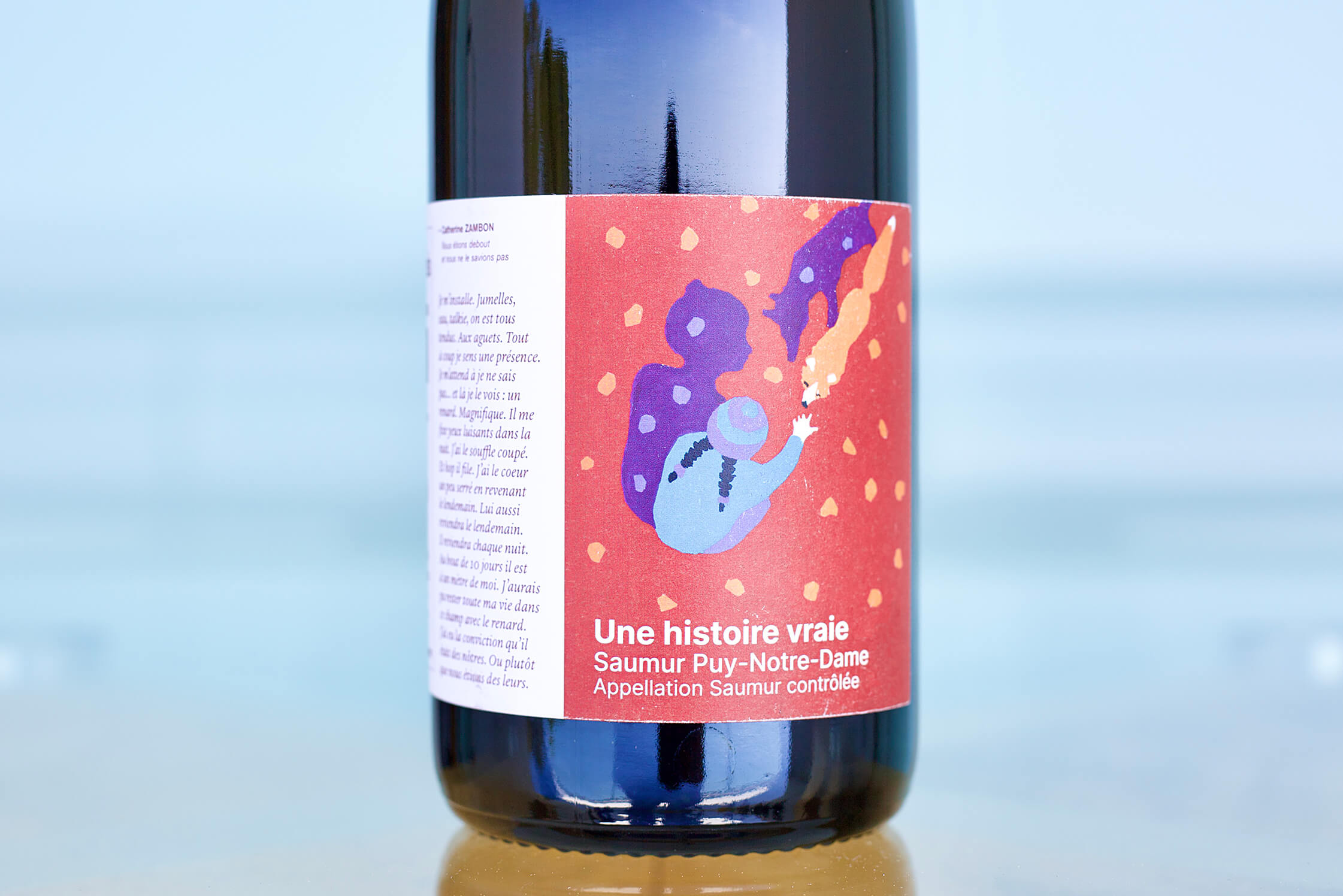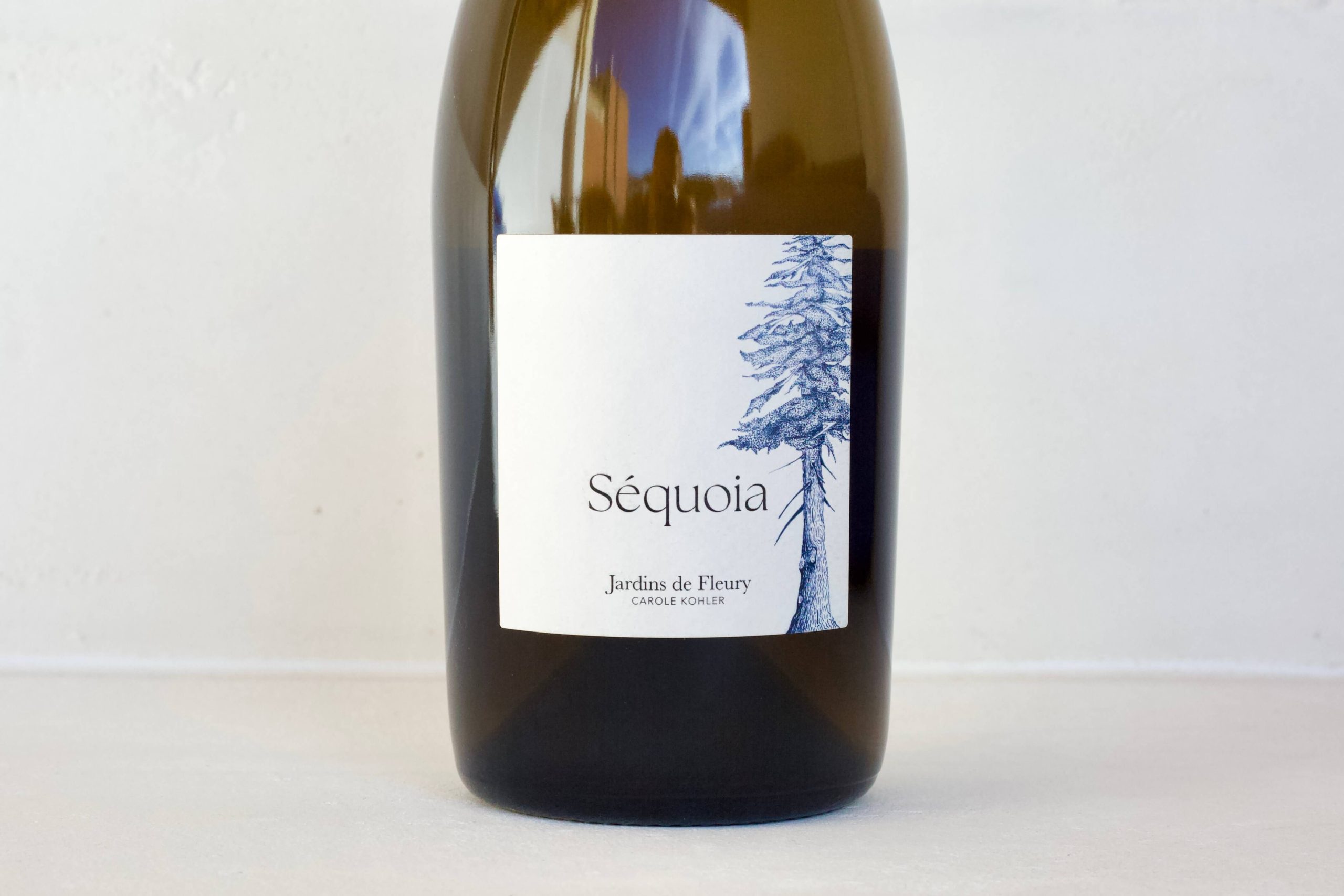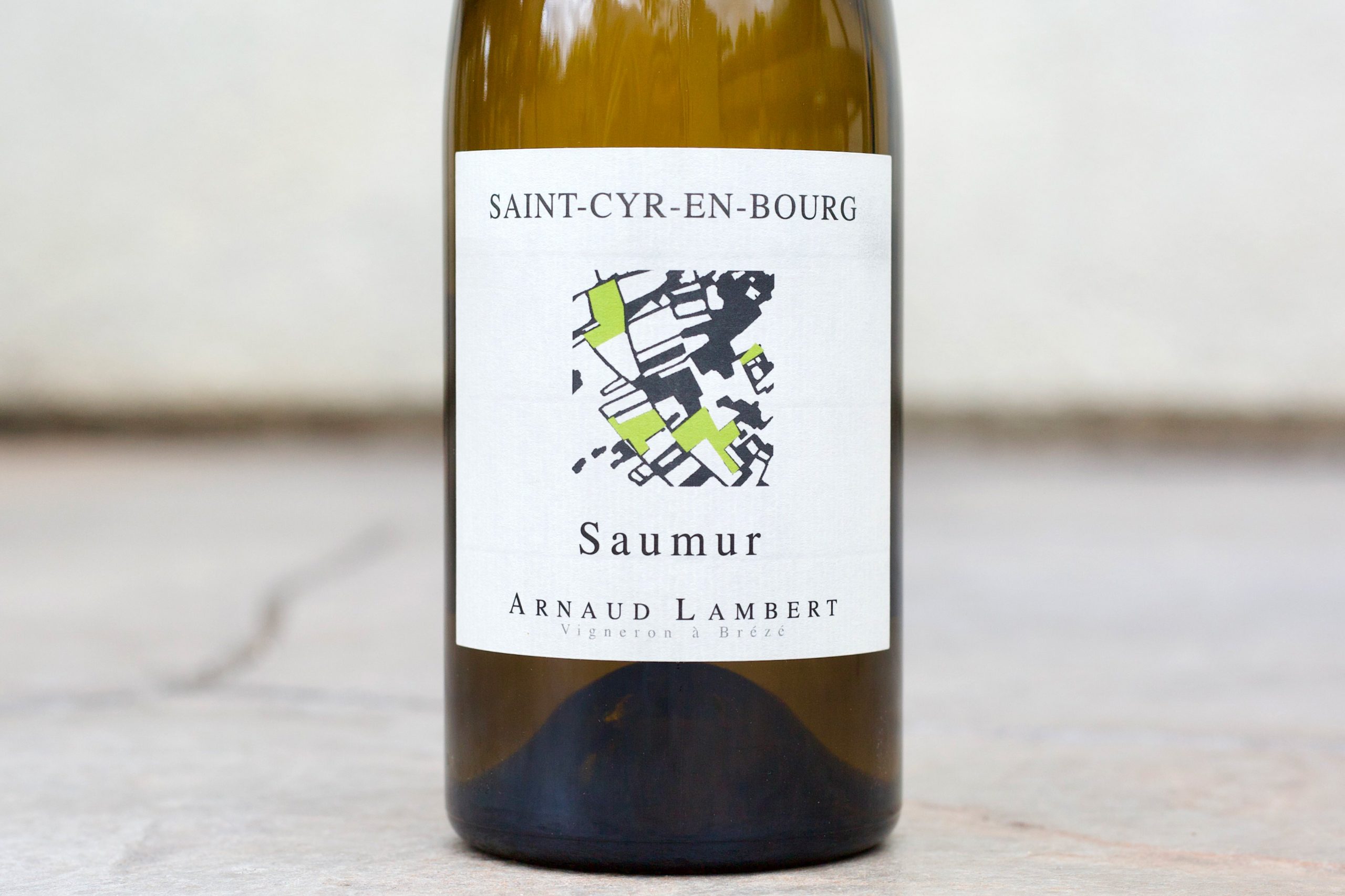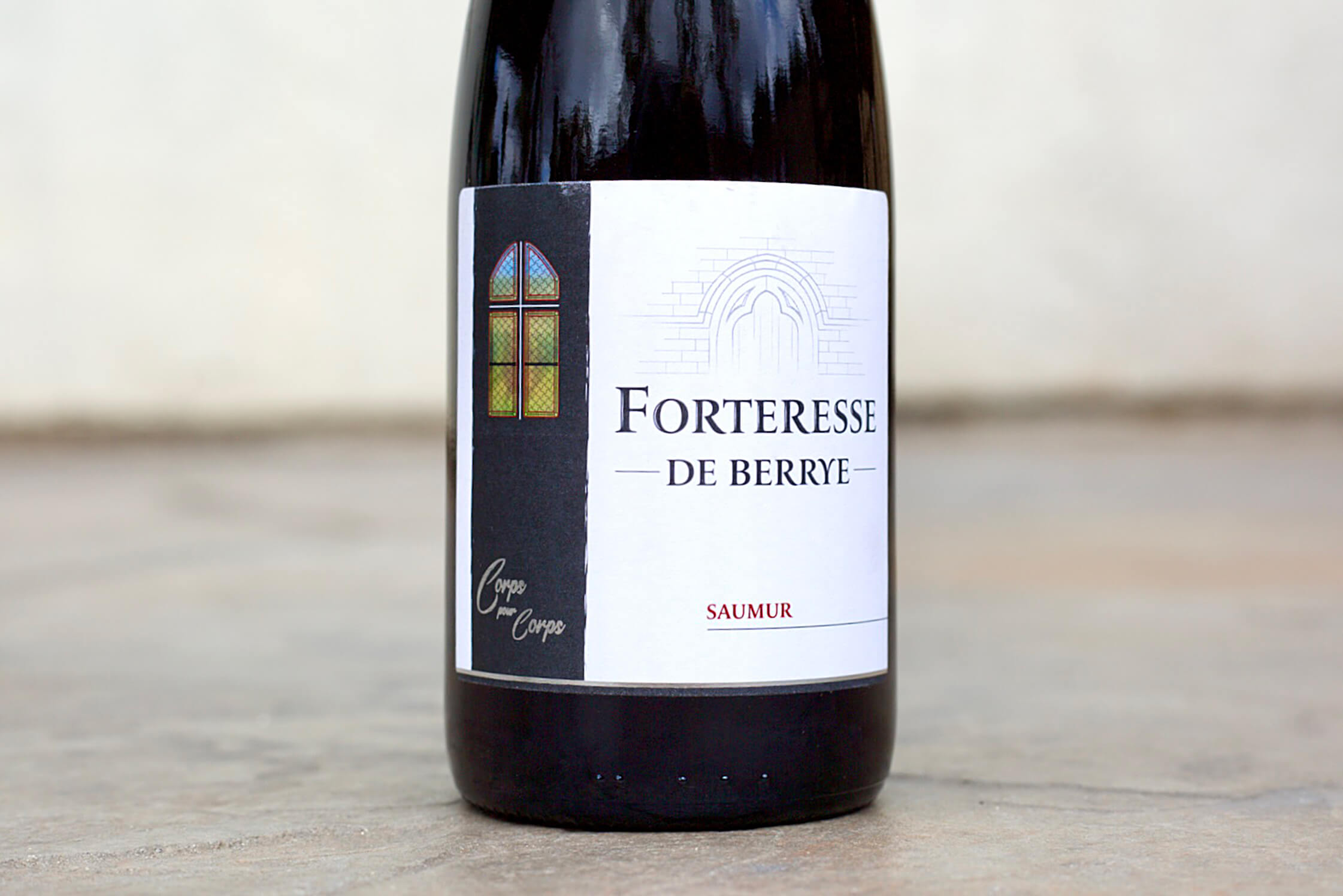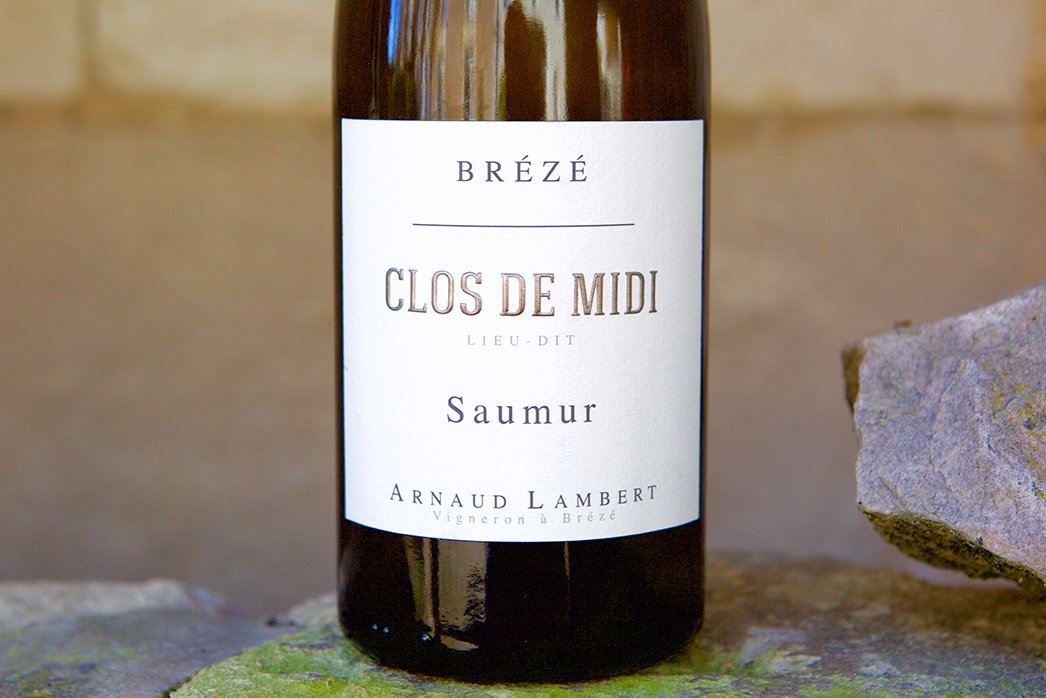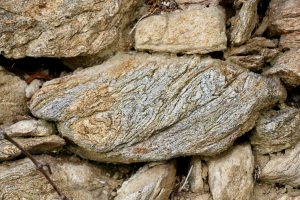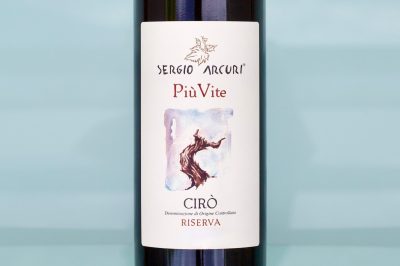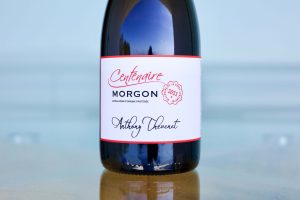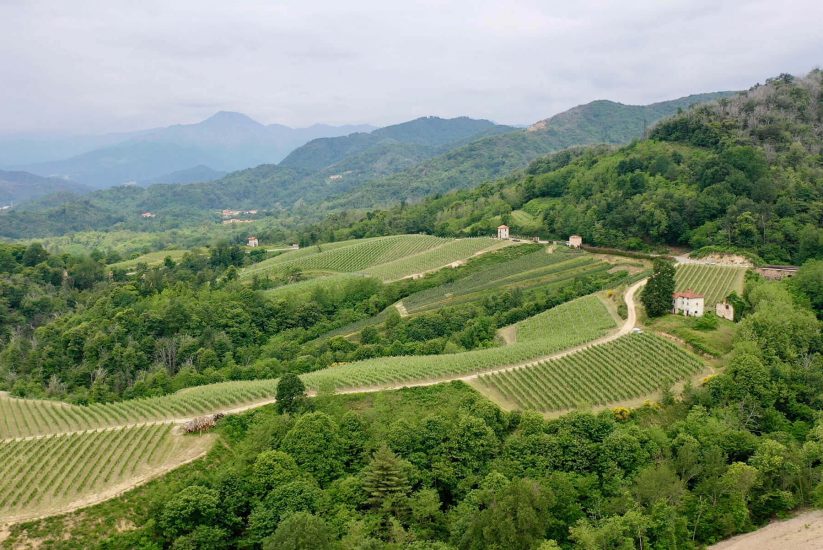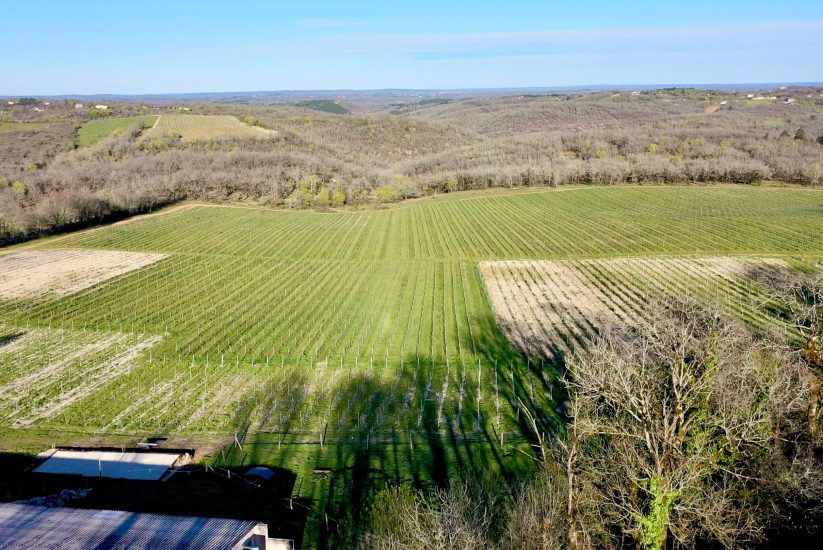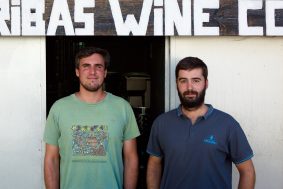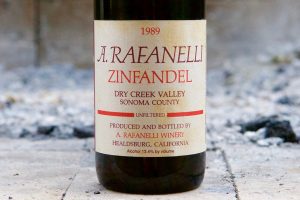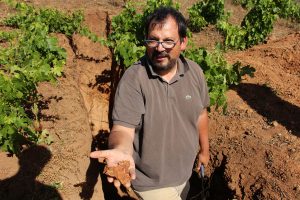Newsletter August 2025
Cellar of Camin Larredya, Jurançon
We live in an incredible time, a statement that remains true as long as we acknowledge that the word doesn’t always connote good things–take the current state of global power dynamics. But in the wine world, incredible things are happening that are fun to watch and be a part of. There’s so much beauty in the diversity of European wine regions finding new footing for the first time, or restoring what was once there, that it seems so utterly boring to stay put in the historical blue-chip regions.
The Source is poised to highlight specific growers in lesser-known European areas without being bogged down by too many from classical regions. That leaves some money on the table, sure, but I never wanted to do what I do, just to follow trends and sell what everyone is conditioned to buy. Like Steve Jobs said, “People don’t know what they want until you show it to them.” There’s nothing more thrilling in what we do as importers than to rock someone’s world with wines they’d never expect. I’m more fulfilled when bringing attention and sharing the voice of the smaller grower working at a high level in obscure places.
I returned home mid-July from a six-day quickie in Piemonte with our Central Coast California representative, Leigh Readey. We visited almost all of our growers, along with some new and interesting players that we’d like to sign on further down the road if they’re willing to hold out until Trump’s dust-up comes to an end. While we have three excellent growers in the Langhe, there’s so much going on outside of it that warrants greater attention. As I stated in our August 2022 Newsletter, Monferrato is a spot to pay close attention to. Our growers there are doing superb work, and when they’re not concerned about price point-priorities, like Spertino and Sette, they’re breaking the mold and producing exciting wines, while growers like Crotin and La Casaccia are making fabulous yet undervalued wines. And then there’s Roero, which seems to be walking into a new stage where some have shed the concept of competing with Barolo and Barbaresco and accepting and following their steep, calcareous sandy soils into the cellar with soft-handed work, like concrete and other neutral vessels with short macerations and a focus to highlight the brilliance of Nebbiolo in this kind of terroir. Nebbiolo and sandy calcareous soils with a slightly cooler climate than Langhe? Seems like it’s been a long time coming, no? There are other places in Italy I’m greatly interested in that others don’t care about, but I’ll hold my tongue until I get a few in the bag, so to speak.
September Rarities Tastings
In September we will have our Rarities Flights Tastings in Los Angeles, San Francisco and San Diego. On the docket will be some of our tiniest production wines that you may only be able to taste at these events. The list of growers will follow in our mid-August newsletter that will also feature a full profile writeup on Demougeot’s 2023 wines and a lot of details on all of his crus, even the little guys.
New Arrivals
Trump is an American pirate. In July alone, we paid more in unjustifiable tariffs than we net in almost three months. He and his numbskulls pretend not to understand that it’s we importers who pay the tariffs, and we have to pass most of it on to US citizens, otherwise we’ll go out of business. And didn’t we already learn during the pandemic that other places in the world want and will pay for Europe’s great wines—products of culture, not manufacturing—and that cultural items are not trade deficits? But only a cultured person would understand that. We apologize for the price increases, but we have no choice.
Before we get into the main features, a quick word on a few wines that hardly qualify as minor, unless you count the early arrival of greatness as a mere prelude. Three of our very best.
First up, the 2023 Veyder-Malberg Wachau wines are landing in California soon. Ahead of our September California Rarities Tastings, which will spotlight all of Peter’s heavyweights, we’re sending around with our team a Veyder-built amuse-bouche Grüner two-pack teaser for what will be unveiled at the September tastings. In the bag will be Liebedich, the lovely, sunnier disposition Grüner blend of parcels from Loiben to Spitz, and Viessling, a wine from Peter’s newly planted Spitzergraben vineyard that tastes like it sounds: sharp, nervy, taut. Full coverage of the 2023s will be in our September newsletter, which makes this summer a great season for my drinking notes. (Available from The Source in California and some other states.)
Spitzer Graben with the crus, Schön in front, Bruck on the hill to the mid-left and Brandstatt to the upper left
Also inbound are Rodolphe Demougeot’s 2023 Côte de Beaune reds and whites. The East Coast will see them first in August via New York, with California close behind in September. This year, both Peter and Rodolphe sent me preview bottles of their 2023s, and if my wife hadn’t slowed down on drinking, they’d be long gone. I tried to take notes on the first set of Rodolphe’s wines, but after a few sips, I closed the laptop and surrendered. I’m still eyeballing Peter’s for the right dinner guests. (Available from The Source in most U.S. states.)
A deeper dive on Demougeot will follow mid-August, and perhaps Peter in September—I don’t want to rush through these! It’s fitting that the 2023s of these two are landing side by side, as Peter and Rodolphe, two of the finest growers in the world, now regularly exchange bottles.
Last on this very short list of viticultural gangsters is Federico Graziani, that Romagnolo transplant making epic Etna of medium to large prices worth their weight. After a very successful campaign in our Rarities tastings that floored everyone in the room, this year we will offer them in advance of their arrival for his newly devoted fans to claim. We have so little coming with the 2022 vintage, and 2023 is a bust due to frost, so get what you can while you can. (Only available from The Source in California.)
Maneterra
Colli di Luni, Liguria
(Available from The Source in all States)
We were mid-blind taste at the Marengo family’s bohemian mini-popup restaurant, a tiny Flat Iron in Novello with more charm than chairs, when Vueling canceled our flight at 9:55 p.m., five minutes before the help desk closed. A computer-rendered apology. No humans available.
We were supposed to depart from Nice en route to Barcelona after our final visit—a Ligurian property just a stone’s throw from the French border, where the landscape shifts almost instantly from cliffside agricultural paradise to one of history’s most affluent and decorated coasts. Torn hands and dirt-filled nails give way to full polish—banker’s hands, as they say. Yet many residents in that part of the world possess more than the banks themselves.
A scramble. Flights refunded. Genoa to Barcelona: expensive to book just eleven hours before takeoff. We would miss our meeting with a potential new partner in Liguria, and with it, any chance to finally meet Claudio Felissimo of Maneterra.
A 5:30 a.m. wake-up in La Morra, four hours after going to bed, marked the start of our dash north, then east, then south, winding up and then down through the plush green of the Ligurian mountains in summer. Cars clogged the road, packed to the roof, stuffed and overflowing with everything but the house itself. Just after takeoff from Genoa’s bus-stop-sized, time-warped airport, the jet angled sharply south and then toward the west. I could see Portofino, the Golfo del Tigullio, and—at least I told myself—the southeast-facing, horseshoe-shaped crease of the Gulf of Poets far down the coast.
It’s been six years since I last passed through Cinque Terre, Colli di Luni and La Spezia, the latter a small but important industrial port city. Thinking we’d be too far out (it sits on the wine route but about halfway from Piemonte to Toscana), we hadn’t arranged our first visit with Claudio. Leigh, my travel partner, was already drifting in and out ten minutes up. I was exhausted, teetering at the edge of consciousness. With the morning sun flooding my zombied eyes locked into an open and upright position, I swore I was dreaming and could see the slope of his vineyards. We set aside a full day for Liguria, and all we did was make it to the airport.
It’s rare that I ever begin working with a grower before meeting them in person and walking their vineyards. But upon first smell and taste, Maneterra was a no-brainer. In the summer sun-drenched and ocean sprayed hills of the Val di Magra—a warm valley shielded from the sea and the Gulf of Poets by Monte Caprione—Claudio cultivates organically grown Vermentino (and a new red!) on south-facing slopes of marine sediment and metamorphic soils with a rich Monaco-level view to the sea from 150 to 200 meters altitude. After training at the École Nationale Supérieure d’Agronomie in Montpellier and gaining vineyard and winery experience in Toscana, Romagna, Piemonte, France, and Chile, his touch in the cellar is deft and the wines beautifully crafted.
Like every year, Claudio’s 2024 Colli di Luni Vermentino is kissed by the salty freshness of the sea, the citrusy zest of soft Mediterranean winds, and a sun-hazy brightness that tastes and feels like late afternoon light. In a wine world often obsessed with seriousness and voltage—many of our wines included—what else can really go toe-to-toe with the summer sun by the sea without already having some sea and sunshine packed inside? How about Ligurian anchovies and olives, focaccia and a Pesto alla Genovese? With only 50 cases imported for the U.S. market, this little rarity with an extremely fair price will more than earn a spot on your summer shortlist.
Spertino
Nizza, Piemonte
(Available from The Source in U.S. market except FL)
The most compelling wines are the most honest. They aren’t the great pretenders, all but neutered of their history to create a global-style brand, nor a wine customized to satisfy the natural wine purists who put ideology above all, often to the detriment of the product. No matter the current moda, the most authentic and interesting wines sing dialect and teach historical context, and crucially, the very best invite our creative minds into their mystery—their bedrock and soil, their genetic heritage, the seasons and vintages, the surrounding woods, the life inside the vineyards and the dirt, and the echo of their nature-conscious ancestors. Their wines guide us into the Fantasyland of their madness and their genius. They are the originals: they are Italy’s Emidio Pepes, Paolo Beas, Giuseppe Quintarellis, Lorenzo Accomassos and Lino Magas—the Mauro Spertinos.
All Suits
One of the most artistic and technically proficient craftspeople in our portfolio, the diversity and skill demonstrated throughout Mauro Spertino’s range forecast the inevitability that he will find his place among those other well-known Italian wine alchemists; in Italy, he’s already there—full cult status for the insiders. Surrounded by wine his entire life, his terroir interpretations have reached a level of distinction rarely found in the wine world. He’s good at everything, from bubbles to Vermouth. His reds range from the bright and sensual Grignolino (hearts), with the ability to flutter and seduce, to his two more elixir-like and dark Barberas (clubs and spades) that mesmerize with a deep well of discovery. Mauro toys with Cortese, a white grape from which he once slowly extracted into an orange hue, crystalline clarity and mind-bending complexity that is now used exclusively for his vermouth, Belle Epoque—a ballerina-like balance of power and grace from this now winegrower, once a full-time, professional vermouth maker. He makes a dazzling, strawberry-skin-fresh Pinot Noir Metodo Classico (diamonds) on calcareous sands. And in good years, a Grignolino aged in wood. All that he bottles speaks to the past, reimagined through the hands of an artist with a bohemian soul.
The Spertino family has worked their lands selling grapes and almonds since 1898. Mauro’s father, Luigi, took over the family estate in 1977 and began to bottle wines under the family name the following year. Luigi became known for his ethereal Grignolino, a once ubiquitous grape of the sandier vineyards in the Langhe, which was all but completely removed and forgotten in the Langhe with the global rise in interest in Nebbiolo. But its roots never left the sands of Monferrato, and Grignolino is again on the rise.
Best Ever?
While their home base is inside the Nizza D.O.C.G., a little less than half of their Grignolino is harvested an hour north in Moncalvo, while the majority is from vines planted in 2000, 2015, and 2021 on west-facing steep slopes between 250–300m, on chalk bedrock with deep chalky, sandy topsoil. In the cellar, it’s fully destemmed and naturally fermented at a maximum of 27°C for 12 days, with one daily pumpover. It’s then aged for four months in steel, filtered and fined before bottling, with added sulfites.
Diamonds and hearts. During my visit to the cellar in November last year, Mauro was certain that his 2024 Grignolino d’Asti would be the best he had ever put to bottle. During my trip last month, he confirmed his previous assertion. “It’s our best Grignolino made in the last forty years.” He also said that his 2023 Barberas were probably his best. (We’ll bring in the Barberas later in the year.)
Mauro explained that the two red grapes he works with for still wines, Barbera and Grignolino, are opposites—reds versus blacks. A good harvest from Barbera is not usually an optimal harvest for Grignolino, though Mauro says that 2025 seems to be a rare exception. Typically, Barbera thrives under the sun and heat, while those conditions oxidize Grignolino’s delicate aromatic profile. Following two hot years, 2023 was dry and hot but didn’t exceed 35°C. In 2024, it rained a lot, keeping the temperatures down and perfecting the ripening of Grignolino.
The 2024 Grignolino is extremely pretty. Classic notes of sweet red rose and white pepper lift from the glass of this extremely light-hued wine that appears to be nothing, but fills the palate on all sides. The second glass was, not surprisingly, even more brilliant—what second glass of any good bottle is not better than the first? It’s diamonds and hearts in the same glass. After 45 minutes open, it’s more hearts than diamonds. Wonderful.
Azienda Agricola Brandini
Barolo, Piemonte
(Available from The Source in All U.S. Markets except TX)
Could we be in the optimal moment for climate change to make the best Nebbiolo ever?
Blasphemy, I know! But for this taster, this is a golden age of Langhe Nebbiolo, the likes of which we’ve never seen. I adore (obsess over) Barolo and Barbaresco made in the classic style. But my new crushes—as of the last five years or so, as I inch closer to fifty—are the entry-level Nebbiolos from the great producers: so much sheer pleasure, with heightened aromatics I only wish I could find more regularly in Burgundy again. (Sorry, Burgundy, but for me, many seem to be holding too tightly to techniques that, in this era, may be losing the fresher fruits too easily. Please return to somewhere near 12%; the fuller fruit profile wilts the flowers and blunts the tension!) These wines clearly demonstrate the versatility of a variety once used in the Langhe for sparkling wines—a meeting in the middle! Some producers have fully embraced this shift, adapting and creating wines led more by beauty than strength. There’s no limit to where the young growers of Barolo and Barbaresco can take us.
Serena and Giovanna Bagnasco, July 2025
Take Giovanna Bagnasco and her sister, Serena. They were given the reins of the Azienda Agricola Brandini that their father purchased in 2009 and immediately converted to organic farming (certified since 2012). Since the sisters’ reign began around 2015–2016, there’s been a notable shift toward highlighting the advantages of their high-altitude Barolo sites instead of competing against others for the top of the power podium, especially near the peak of La Morra, where we find most of Brandini’s estate holdings. There are four parcels there that make up their 2020 Barolo del Comune di La Morra. This wine blends the youthful spirit of a Langhe Nebbiolo and the mega guts required for a true Barolo, but with the mercurial pleasure in the lead more than a D.O.C.G. posture. Their touch is unmistakable, replacing the more classical style that preceded them and launching the wines from Vivaldi Baroque into a kind of ambient minimalism, like Max Richter’s reimagining. It’s still Vivaldi, but now stretched between vivace and adagio: slowed, softened, suspended in a dreamlike state, punctuated by moments of lift and explosion.
After their more classically styled 2019 Barolos (a collection of wines that followed the rhythm of the season, favoring structure and early introversion, wines to patiently lay down for a while), the 2020 La Morra signals their commitment to highlighting and even submitting to the strengths of each vintage. Rather than wrangling the wines and pushing them into conformity with the expectations of past glories from this celebrated appellation, they build around what the year offers. They’ve done this consistently since 2016–these ladies are beholden to nothing but good faith and craft over ideal, not the region’s tastes and techniques as though encoded into the laws that govern cellar decisions. They think freely and act as they see fit. Dominium liberum!
2020: Another Langhe Dark Horse
I knew something was up when I first tasted the 2020 Nebbiolo wines in their youth. There was a glow to them, an ease, a silk-sleeve charm. Their only misfortune is being sandwiched between 2019 and 2021, two classic vintages built like the Serralunga and Castiglione castles: imposing, permanent, and impossible to ignore; monuments that celebrate clear moments in history.
But given the choice today, I’d drink 2020 as much as its neighboring vintages. Right now, I prefer to observe and study the 2019s and 2021s just as much as any committed Nebbiolo junkie. They deserve it. They invite it. The critics will tell you they’re superior in the grand, textbook sense. And I get why some might prefer them for their structure and pedigree. I love that style, too. But for me, they may not be better than the 2020s. Then again, they might be. (Not waffling–just playing nice.) It depends on each person’s calibration for what they expect wines like these to deliver. It also depends on the moment, the mood, the expectation, the weather.
Styles have changed a lot (seemingly with great influence from growers that have bucked a little bit the traditional taste post-Barolo Boys, like Burlotto’s Fabio Alessandria and his sometimes overwhelmingly charming Verduno Barolos), and so has the perception of the wines. Where critics may shortchange relatively recent vintages, like 2011 and 2012, 2017 and 2018, perhaps it’s because of a preconceived notion that—in their annual visits probably around the same time of the year they’ve reviewed all wines—every vintage should taste as though they’re on the same pacing and profile as wines harvested in “ideal” years (those that check the five boxes). There’s plenty of magic still in the years that don’t get the favorable press, and so far in Langhe, there are almost no “bad vintages” anymore—just different ones and/or harder to manage. And the classicist stalwarts, those tethered to a fixed ideal, do they really feel there’s only one way to skin Nebbiolo to qualify it as “great?” What’s not to love about a 13% Nebbiolo with perfectly supple fine tannins with stinging freshness that sings like a soprano? It should improve the libido!
So, what makes for a “Truly Great Wine?” Well, do you love it, or not? There’s the answer. Someone else’s T.G.W. may be a bottled tragedy for you (maybe like so many wines with the big points!). Greatness is yours to decide. Churchill or Che?
R56 and other Brandini vineyards in La Morra
The northwest side of La Morra, home to Brandini on the outer edge of Barolo—one of its coldest areas
Today, as much as it always was, T.G.W.s from the anointed vintages are more for collectors and speculators. (Guilty!) Greatness in wine isn’t bestowed upon something from the benefit of its birth year. A great season is luck. An easy season is luck. A good season can produce a great wine. It can also produce disappointment. When there’s nothing to do during the growing months but to let nonna stuff you like a ravioli, day after day, nervously wondering if the region’s luck will hold, perfectly even ripening (which can be boring …), no shock weather events, a long season, perfect diurnal balance, less time in church praying? But do growers gain more nervous-eating weight in the good years, or the challenging ones? I think the good years, because in the challenging ones, they’re too busy busting their butts! Perfect seasons, a little boring? A little too predictable, maybe? “Yah, yah, yah, what else you got?” commonly crosses my mind in the face of a T.G.W.
Greatness comes from adversity. It’s hard-earned, not gifted. That’s sports. That’s humanity. It’s when the odds are stacked unfavorably, but someone rises to the occasion and succeeds. That can be wine, too. Effort and ingenuity are sensed in the glass. Greatness in wine is not born into the privilege of a perfect season. Ask any winegrower what their greatest wines are, and they’re likely to name a year you didn’t expect, unless you had their wines from that year.
“Buy the producer, not the vintage.” This is the most important tip when it comes to buying wine. It will always remain the best advice when investing in your pleasure rather than speculation. The best producers are, above all, great craftspeople, and when their backs are against the wall with vintages that don’t make themselves, they often create their most thrilling wines—sometimes the top wines of their life. So, check back with me in 2045, and I may not be able to tell you how the 2020s stack up after twenty-five years because they’ll all probably be gone, sacrificed early on the altar of unrepentant pleasure.
The view of Monte Viso and the Alps from Brandini’s balcony—not a bad view!
And who knows where we’ll be in twenty years anyway; if I’ll have the mind or the liver to parse it, or if we’ll all be living in some Wall-E-like, post-Trump, Biff Tannen dark world. I’ll be hiding in the cellar with my 2019s and 2021s lined up like monuments, dreaming of those gorgeous, vanished 2020s.
While it may sound like a pitch for Brandini’s 2020 La Morra as a juicy, fruity, slammer, it’s not. (That description is more for their cru wines!) This wine is serious business, but it has tight solar fruit flares that turn on the tractor beam. With the bottle I opened in Spain in June (well-rested in my cellar for about four months), it seemed to deliberately counter my praise for its openness by being coy. But its timidity was short-lived, and its structure made me sit up, reeling from any idea that it could be related to a Langhe Nebbiolo type. The bottle we drank over lunch in July with Giovanna followed suit and opened up beautifully and even faster than the bottle I had in June.
Raspberry is a strong fruit component right now, from the first sniff to the last. Initially, it’s a little dusty with dainty purple and red spring flowers popping above the earth notes. The second glass didn’t hopscotch out; it did a full Olympic triple jump ahead of the first. With more time open, the concentration of raspberry to blackberry becomes even more pointed and drives far back into the nose. The high-altitude ridge that passes through La Morra, connecting Verduno and Barolo is clear in this wine: it’s flashy and sappy, like old-vine fruit and summer weather (like so many Italian greats from Alto Piemonte down to Etna), but stays tense and cut, equally inviting the ascetic classicist to the same table with the no-rules hedonist. By glass three, then four, we’re on cruise control. The top is down and the sun is shining. There are few Barolos I would ever describe as gulpable, but after some hours open this one lives up to that portrayal.
Brandini’s 2020 is a perfect introduction to what will arrive after their single parcel wines: flashy but contained. And while single-parcel wines are fascinating studies of terroir specificity separated by what are often subtle nuances, the strength of their four rock-solid parcels that sit above 400 meters in this one wine presents a “comune” Barolo that is simply hard to knock off the pedestal among its peers at similar price levels. It’s simply too good and too fine, and the pleasure meter of 2020 takes it to that next level.
Brandini is earning their stripes. They now fit into the “buy the producer, not the vintage” category. (Actually, maybe buy all the 2020s you can get. Hah!)
Also arriving from Brandini are, like Sette’s 2023s, another preview of the future of where these two talents are going: 2023 Langhe Nebbiolo “Filari Corti” and 2023 Dolcetto d’Alba “Filari Lunghi.”
Giovanna knows them better than I do and sent me some notes.
“In my opinion, I would define 2023 as one of the vintages that I made with the most lift. Its brilliant aromatics carry great freshness, balance and generosity. The uniqueness of this season is that even if summer had some heat waves, the result was very balanced alcohol (which is lower on average) and great freshness. If you tasted it blind, you probably wouldn’t define it as a ‘warm vintage,’ which is most likely buffered by the cold and rainy spring. We farmers have learned better how to navigate warm vintages in the vineyards.
“Regarding the 2023 Nebbiolo, it’s the same vineyards and cellar processed, but the result is an abundance of aromatics and a good tension on the tannins that provides a great lift and freshness.
“Our Dolcetto is completely new. We switched from inside the south of Barolo to Diano d’Alba D.O.C.G.. Diano is a traditional area for the varietal, and this site was long dedicated to it. The vines are about seventy years old and grow at 400 meters on limestone and clay in the soil. This adds more to the finer fruit and floral elements of Dolcetto, along with an interesting backbone and a great structure. The vineyard is organic certified, and we still use the same vinification (stainless steel only) to capture the brighter and vibrant side of dolcetto that, in this soil, naturally gets deeper and more layered.”
Brandini’s wines go quickly after arrival, but there will continue to be opportunities to run with these puppies by the glass.
Castello di Castellengo
Alto Piemonte
(Available from The Source in all U.S. Markets except MA)
A complete unknown, our first order from Castello di Castellengo was of the fastest depletions in our company’s history. Of the two wines brought in, their entry-level, Rosso della Motta, has been described by our luminary Nizza grower, Sette’s Gino Della Porto, after tasting earlier this year with Magda, the owner and winegrower, at the cantina as “the best wine in Italy for the price. Maybe the best wine in the world for the price.”
The sentiment seems universal for those who tasted these wines upon arrival. They’re pure Nebbiolo—even the Rosso della Motta!—from Alto Piemonte on deep sandy-loam soils similar to Lessona just to the north but often a little more stout in soil structure. The 2016 Castellengo, a wine we managed to secure another batch of for this new order landing this month, absolutely floored me the first time I had it at the cellar in 2022, and every bottle since transports me straight back to those hills and dreams of the common thread of Italian reds that start in Alto Piemonte and end in Sicily past Etna and onto the beachfront real estate of Vittoria, land of Frappatto. While the 2017 and 2018 are fabulous, I’m thrilled that we were able to secure 20 more cases of this vintage before having to move on.
The leg up with Castellengo is not only its terroir (which we’ll get to shortly), it’s the appellation, Coste della Sesia. What was originally established as a sort of generic ‘lesser’ appellation has actually led to a greater freedom from D.O.C. rules about how to make wines and what grapes should be in them. This is why all of Castellengo’s reds are 100% Nebbiolo. It’s only a matter of time before the generic D.O.C. appellations of Coste Della Sesia (established in 1996) and Colline Novaresi (in 1994) need to be updated, and places like the hill of Castellengo moved up in class. Their D.O.C.s were established when almost nothing so serious was happening in Alto Piemonte to grab the attention of journalists and buyers. Today, several hectares (give or take 100) planted can only be classified as Coste Della Sesia D.O.C., but where it starts to get hairy is when grapes grown in other D.O.C.s that don’t adhere to the D.O.C./D.O.C.G. regulations can also be labeled Coste Della Sesia D.O.C. or Colline Novaresi D.O.C.
Magda Ciccioni, the mind, the hands and the emotion behind these special wines.
Why So Special?
Located east of the once wealthy Alto Piemonte town of Biella, and south of the historically prestigious Lessona appellation—whose Nebbiolo wines were in former times considered Italy’s finest—a unique hill stands above the eastern plain below, spared from the full erosion caused by Alpine runoff and glacial movements. This special terroir, featuring volcanic marine sands similar to those in Lessona and the western side of the Bramaterra appellation, is home to the organically farmed Centovigne Nebbiolo and Erbaluce vineyards, owned by Magda and Alessandro Ciccioni.
Raised in their 18th-century castle, Castello di Castellengo, Magda (who is both the mind and hands behind the delicate yet flavorful wines) matures their organically farmed wines in concrete tanks and large oak barrels, blending tradition with modern sensibility. I don’t know how the profundity of this particular detail escaped me during my previous visit and inquiries, but none of her red wines have added sulfites until the time of their bottling. Their entry-level wine, Rosso della Motta, is aged almost two years before bottling, while their Centovigne (not yet imported, but destined for the next order) spends four years in old wood, and Castellengo as many as five! What courage! It’s extraordinary! And for the prices? Unbelievable, but true.
Castellengo’s vineyards are the white star on the left side of the image, on the unique, free-standing hill.
Viewing this appellation through the terroir lenses of geology and climate, which, of course, both affect the choice of what varieties are optimal to plant, makes them especially hard to generalize, except that they’re far too general. There’s too much quality wine made on very different terroirs all over these widespread appellations, and while some are average sites, others are spectacular and picturesque. However, dizzying eye-candy vineyards don’t immediately guarantee the highest quality, and it’s often those that are unassuming and even boring to look at that can deliver a spiritual experience. Take many top vineyards of the Côte d’Or, like Chambertin and its satellite Grand Crus, or the unassuming vineyards of Brézé that electrified the wine world only just over ten years ago.
Castello di Castellengo’s 2022 Coste Della Sesia ‘Rosso della Motta’ is the first of their range of shockingly low-cost wines. Like all their reds, it’s not only a fabulous price, but it’s also a serious wine. What it’s best at is how much joy it unfurls compared to so many other Alto Piemontese reds that have forgotten wine is also to be enjoyed; to be fruity, to be merry, to show that hidden joy behind the stolid gaze of many well-worked and tired Alto Piemontese grape farmers. It’s made entirely from Nebbiolo grapes harvested from 70 to 80-year-old vines planted between 300-350 meters on the rolling hills of marine sand and clay. To keep the fruit profile at the forefront during its two-week natural fermentation in steel, Magda maintains a maximum temperature of 22° C. It’s then aged on lees for 24 to 30 months in concrete without racking before a light filtration at bottling. With only 40 mg/L of total sulfur, added only at bottling, its years of refinement under the natural bacteria, yeast and microorganisms that survived and even fermented further make this a truly authentic wine, at a great price.
The orange-yellow volcanic sandy-loam soils of Castellengo
The cantina’s highest emotional, cultural, and finely tuned craftsmanship Magda delivers is her flagship wine, 2016 Coste Della Sesia ‘Castellengo.’ The 2015 was spectacular already, but given the choice of starting with that slightly more rustic but wonderful version or the more perfected and precise 2016, when tasted side by side, there was no choice. We were able to circle back and grab another twenty cases after our first order disappeared overnight.
If it were 2013, during perhaps the height of Alto Piemonte’s market share in the U.S, this wine could’ve been one of the most talked about in the entire region, if tasted blind. However, once revealed, its appellation might deter people from acknowledging how fabulous they think it is. Also entirely composed of Nebbiolo but from a single 25-year-old plot that peaks out at 370 meters, with a steep slope. Their selection of these ‘younger vines’ compared to the older vines of their Rosso della Motta shows both that young to middle-aged vines can make wines as compelling as any old-vine wine, and that terroir trumps all things. The spot is special, and that’s clear in this wine, the top of their range.
In the cellar, it’s also kept from exceeding 22°C during fermentation to preserve more fruit for three years in old 15hl barrels and sometimes as many as five years. For those who love wonderfully refined and stunningly perfumed Nebbiolo in large old wood, this is not to be missed.
New Source Producer
Fattoria Zerbina
Romagna, Italy
(Available from The Source in California)
Another set of beauties from the women in wine this month comes from Cristina Geminiani, one of the first Italian women of our lifetimes to take the reins of a cantina. 1987—a year that brought the full warming of Reagan and Gorbachev’s friendship, the further thawing of the Cold War, the death of Andy Warhol, the debut of The Simpsons, and, most importantly to this then-eleven-year-old future wine importer, the life-altering release of U2’s The Joshua Tree—was the year a young Cristina found herself in her grandfather’s vineyards, rooted in tradition but facing a horizon wide with possibility.
Cristina Geminiani doesn’t make wine to impress; she wants to reveal something true about Romagna and Sangiovese from the eastern Apennine hills. The sun is reborn every morning over the Adriatic to greet the vines, the sea flooding them with its salty, serene mists. A compelling counterpoint to the often solemn tone of Tuscan Sangiovese, Cristina’s renditions of this most noble of Italian grapes are bright, jubilant expressions that still have a distinct Italian stamp with the expected structure and longevity hallmarks. A duality within her range displays contrasting styles, where Ceregio and Poggio Vicchio delicately balance charm and seriousness, and her wines, like Pietramora, are classically framed with firmer tannins and measured poise. And there’s her precious Albana, a variety she is most known for in Italy. A talent parallel to Riesling and Chenin Blanc in versatility, her dry and racy Bianco di Ceparano, and the sticky-sweet, botrytised Romagna Albana Passitos all possess a naturally high tension, with generous and inviting Adriatic salinity.
An Outlier
While neighboring France gradually opened more space for women in its professional winegrowing circles, Italy’s opening was slower. Constraints by traditional structures through the Catholic Church and rigid family hierarchies with deeply rooted cultural patriarchy meant that, at the time, women were largely behind the scenes. In industries like wine, women in leading roles were not only uncommon, they were nearly unthinkable. Thus, Cristina Gemignani’s decision to accept the reins of Fattoria Zerbina from her grandfather, Vincenzo, was quietly radical for the mid-1980s.
Rather than seeking fanfare or framing her role ideologically, Cristina immediately focused on quality and a readiness to challenge assumptions—not only in Italy’s societal norms for this métier, but in the potential of Vincenzo’s vineyards in the backcountry of Romagna. Among just a few other women in her time (like the young Elizabeth Foradori, who also led her family’s winery in the 1980s), her success signaled early stirrings of change in an industry that hadn’t yet begun to make much space for women in leadership positions. (Another advance for Italian women in wine that surprised me is when I met Barolo’s Virna Borgogno, where I learned she was the first Italian woman to attain a degree in Enology in Italy. That was as recent as 1988.)
Regarding her new station as the director of this family estate in 1987, Cristina said, “At the beginning, there were some headwinds, especially in the vineyards with the team and the new methods to handle the different canopy and the green harvest. But in general, I was lucky and happy. There were never problems on the commercial side.”
The clearest argument for Cristina’s place, any winegrower’s place, is found in the quality of the results. Her relentless toil delivers a range of exceptional wines that begin with fruit picking in August and end with meticulous berry selection of botrytized Albana in the late fall—immortalized in vinous form. It’s painstaking work, but she appears to pull it off effortlessly.
Early Inspirations
An early Francophile, Cristina visited Bordeaux at 22 to learn French and tasted her first Sauternes. It was Château Suduiraut, and it was the catalyst that encouraged her to learn more about the subject and immerse herself in the world of wine. That Sauternes also stimulated her interest in sweet wines, and she was lucky enough to have the uniquely versatile and nearly extinct Albana as her medium. She’s become one of Italy’s most (or maybe the most) prominent desert wine growers.
Before jumping into Zerbina, Cristina eventually completed her agronomy degree in Milan, and, already fluent in French, was soon on her way to study at Bordeaux University in Talence. Her professor, Denis Dubourdieu, and his father, Pierre, had a strong influence on her future as a winegrower. But Romagna would be this native Milanese’s destination, and Marzeno, a hillside zone on the northeastern edge of the Apennines along the Adriatic, the staging point for her life’s work. “The investment was to change the perception of the estate, thanks to a new type of viticulture and the new style of wines to follow. Beginning with the conviction that the vineyards in Marzeno had a different character and specificity from other areas, our goal was to highlight their salient features.”
There was no formal DOC for Marzeno Sangiovese until 2011, when the DOC Romagna Sangiovese Marzeno was established. Thus, Zerbina’s earliest bottlings (like the 1985 Pietramora) carried only the Vino da Tavola di Marzeno designation. This already denoted a clear thought and idea about enhancing the terroir, one that would later become the DOC for most Sangiovese wines she produces.
Terroir: Macro
Fattoria Zerbina is on the Romagna side, rather than Emilia, where the riches of the sparkling red Lambrusco, Parmigiano Reggiano, Aceto Balsamico, Prosciutto di Parma, Mortadella, and the pig dominate. The Romagna culture is prevalent in the Apennine hills that run parallel to the Adriatic in the northernmost end. The people of Romagna are known to be more open-hearted and easier going than the more industrial and affluent Emilians inland toward the west. The fare is less rich than in Emilia and Toscana in the west and south, with more seafood and vegetables to accompany the pasta and meat. The wine is somewhere in between, though without the bubbles. Perhaps more rebellious than their illustrious neighbors in Emilia and Toscana, it’s not surprising that a young Cristina from Lombardia would blaze an early trail with the support of her grandfather in an almost entirely male-dominated Italian wine world.
While shaped by the nearby Apennines, the climate of Zerbina’s vineyards is tempered by the confluence of sea breezes from the Adriatic, just 30 kilometers away and the nearby mountains that peak with Monte Falco at 1,658 meters, which lies about 45 kilometers south from her vines and 40 kilometers from Florence to the west. She notes that despite the Apennines behind them (home to the famous Chianti hills and Montalcino further south), the mountain influence is mitigated by the presence of the sea and its salty winds—another crucial difference between these Sangiovese producing areas.
Zerbina’s vineyards stretch across altitudes from 90 to 250 meters above sea level on an elaborate patchwork of small parcels with varying exposures and soil types. Cristina says this diversity “makes harvest crazy,” but she also believes it contributes much to the complexity of her wines.
Terroir: Micro
Red clay and limestone are reserved for Sangiovese, a vine that prefers well-aerated soils over compacted ones. Red soils are often rich in iron oxide, as is the case for Zerbina’s, and it’s usually a sign of good aeration. The high calcium content (especially from the limestone in her vineyards) helps the clay soils to resist compaction by promoting aggregation. (Science quickie: calcium ions, with their double positive charge, bridge the negatively charged clay particles, binding them into airy, crumb-like clusters that improve drainage and structure. Thus, keeping the clay particles from being impenetrable by water. Low-hanging fruit comparison: France’s Côte d’Or.)
While Chianti Classico and Montalcino draw from galestro, limestone and marl, Cristina’s red clays and fractured limestones, coupled with the Adriatic influence, yield wines with a freshness and open-armed drinkability that set them apart. She says that their grapes always express a friendly, fresh character across the appellation with simple, smooth tannins, which she says may be their most distinctive feature when compared to other Sangiovese producing regions that build on firmer structure in more continental climates and higher overall altitudes.
Other reds on the property, like her Merlot and Cabernet Sauvignon, are planted on the more compact gray clay where water-stress levels are higher. In winter, the soil is well-hydrated and cold but in the summer, the vines become more stressed when the clays dry, potentially breaking root systems that need more irrigation. Being a poorer soil with lower organic matter, the gray clay offers much less nutrition for Sangiovese but is more suitable for these French varieties.
Not surprisingly, the lifted and ethereal Albana is planted on a fine-grained topsoil composed of sandy and calcareous fluvial deposits. A little deeper down, it becomes rockier and richer in clay.
Adaptation
If the last decade has proven anything, it’s that the real story of Zerbina isn’t just tinkering in the cellar with the wines, it’s adaptation in the vineyards. Cristina says climate change has strongly influenced her decisions; for several years, she’s been developing new techniques in the vineyard and cellar to mitigate its effects.
She’s reducing vine vigor, adjusting pruning, delaying mowing, and working the soils with tools that preserve the root zones. Her goal is longevity, in vine, wine, and the legacy of a place that’s finally beginning to speak for itself. As she puts it, they grow vines trying to respect their balance and attitude, trying not to push them too much.
Turbulence: 2020-2024
The past five vintages have tested Romagna’s growers, and none more than Cristina.
2020 was dry, punctuated by a miraculous rain in August that saved the vintage. 2021 was preceded by record December rainfall that refilled the soils. 2022, the hottest season in recorded European climate history, marked Zerbina’s first official organic-certified vintage, and despite the heat, delivered excellent quality. But then came 2023.
Cristina simply calls 2023 the worst season they’ve had in their region. (This is hard to believe if you’ve tasted her 2023 Bianco de Ceparano from Albana!) A violent rainstorm brought 300 mm of water in May, causing widespread flooding and landslides. Later, a July storm with winds over 100 km/h and intense hail destroyed most of the higher-elevation production. The vintage was salvaged only for Albana and some base Sangiovese wines. No reserves were produced as sixty percent of the harvest was lost.
2024 became a year of rebuilding. Soils were repaired, pruning restructured, and vineyard defenses reinforced. Albana was picked in pristine health. Sangiovese ripened cleanly, but the grapes were rendered thin-skinned from the heat. Cristina says only the future will speak about the wines.
Albana: Sea and Sky
Albana, the flagship white of Romagna, is often misunderstood, if it’s known at all. It lost much of its land to other varieties that were thought to have a gentler appeal. For this taster, it’s hard to imagine overlooking this grape, as it’s such a talented Italian white variety.
Cristina’s version is anything but esoteric. Her style is oriented toward white flowers and citrusy character, vibrant and iodine-rich, a reminder of the sea, millions of years ago. In still form, as the Bianco de Ceparano, it’s racy, vertical and electric, and one of the most compelling Italian white varieties that seems to match our company palate as well as any white variety in all of Italy—at least in the hands and vision of Cristina. And like Fiano di Avellino and the Campanian varieties, it ages well, and its complexities improve over time.
Planted on fluvial soils of sand, calcareous materials, and deep-lying rock and clay, her Albana achieves natural acidity and remarkable structure. The grape’s late-ripening habit and sparse clusters make it ideal for noble rot. Cristina says it ripens late and has a high sugar content balanced by a naturally high acidity.
In the cellar, Bianco de Ceparano, labeled as a Romagna Albana Secco DOCG (established in 1986, and the first DOCG Italian white wine), is made directly and simply with natural fermentation in steel followed by a half-year in concrete before bottling.
Sangiovese: Fruit and Earth
The entry-level Sangiovese wines are as telling as the flagship bottles, maybe even more so for today’s market trend, where buyers are interested in the immediately accessible yet serious. Like many growers wise to the times, she is also taking a softer approach to her entry-level range of reds.
They’re almost too perfect in their combination of terroir and pleasure —the only danger is how easily they disappear from your glass. Not typecast as only pleasure bombs, Ceregio, Torre di Ceparano, and Poggio Vicchio reflect not just place, but philosophy: wines that don’t posture. Cristina believes Zerbina succeeds in producing wines, especially the younger styles, that are an incredible magnifying glass of the terroir, with a beautiful intensity of color, with nuances reminiscent of ripe cherry and strawberry with hints of violets, always supported by simple yet present and elegant tannins. They’re juicy and delicious, but also show extremely pure and strictly focused character.
Fermentations are conducted at lower temperatures than the Italian norm, at 25 to 26°C instead of 32 to 33°C. This cooler temperature helps capture more of the fruit notes than earthy ones. Extraction is gentler than in the past, and so is the time on the skins. Historically, they’ve kept extraction quite short and gentle, with lower fermentation temperatures, lighter punching down and pumping over, and sometimes the use of délestage (rack and return). She avoids crushing berries after destemming and prefers to work with whole berries. These adaptations for shorter times and gentler handling have all been realized in recent vintages.
The higher-end Sangiovese wines were more of a throwback in overall style than the entry-level reds, until 2019. The wines Cristina crafted in the past were built to stand up to their Tuscan counterparts, though perhaps always a little more accessible and fruit-strong, even for the style. But in 2019, she recalibrated. In the vineyards, they tried to lengthen the ripening phase by integrating guyot pruning with bush pruning in some of the old vines.
Many of the wines are quite delayed in release time, with Pietramora and Marzieno released about half a decade after their harvest year. They come from the most prized parcels of their vineyard collection and are intended for the longer haul. They spend two to three weeks fermenting and macerating on the skins, followed by a year of aging in 500-liter tonneaux.
Starting with the 2019 vintage, they began to work more in the vineyard and cellar to define a more contemporary and less massive, extracted, old-style. They tried to extend the ripening time by integrating Guyot pruning alongside bush pruning in some old vines. Guyot slightly increases the production but also results in smaller clusters, delaying ripening and promoting lower sugar concentration, all necessities in this area with the combination of climate change and Cristina’s desire to evolve toward a fresher style. While in the cellar, they applied the same rules to the vin de garde style as they did with the young wines by reducing the fermentation time of the grapes to two weeks while keeping the temperatures lower, and finally fermenting most of the grapes in tonneau.
We have yet to dive into importing the Albana dessert wines, but we hope to have some hit our West Coast shores one day. The only problem with these wines is that the production is tiny, and she’s built a strong global following for them in recent decades. So, we must wait for our opportunity!
